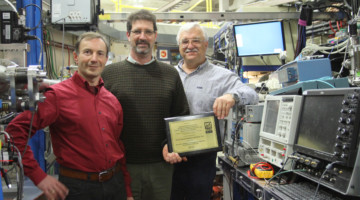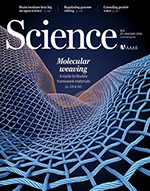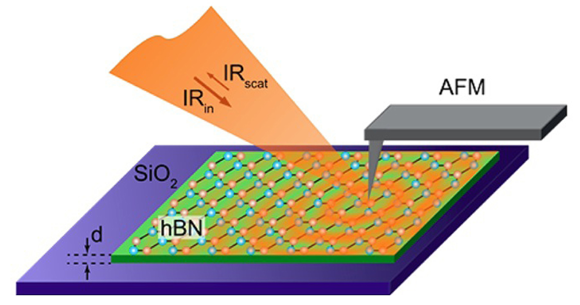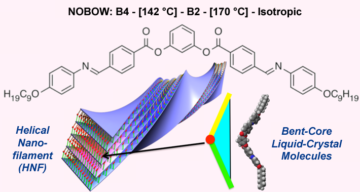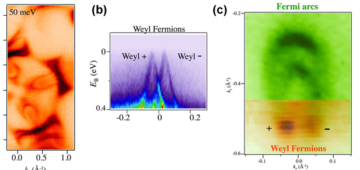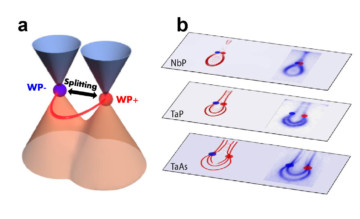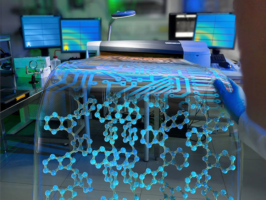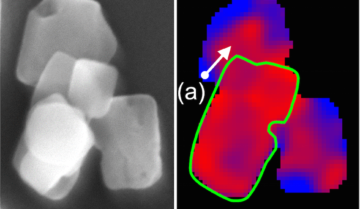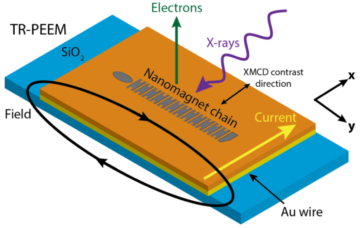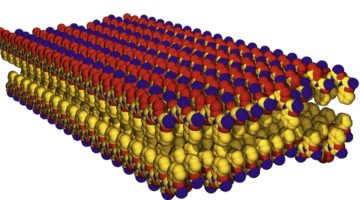A collaboration between Bay Area company aBeam Technologies, the ALS, and the Molecular Foundry is bringing cutting-edge metrology instrumentation to the semiconductor market, which will enable a new level of quality control. Read more »![]()
Weaving of organic threads into a crystalline covalent organic framework
Threads made from organic molecules linked by strong covalent bonds were used to weave a 3D covalent organic framework with unusual dynamical and mechanical properties. This molecular weaving method will enable the production of materials with increased precision and functionality. Read more »
Phonon Polariton Behavior in 2D Materials
Synchrotron infrared nanospectroscopy (SINS) was used to study the behavior of phonon polaritons in ultrathin crystals of hexagonal boron nitride. The results pave the way towards engineering infrared-light photonic nanodevices and expand our understanding of polariton behavior in low-dimensional nanomaterials. Read more »![]()
![]()
Watching a Liquid-Crystal Helix Unwind
For the first time, researchers have directly measured the helical pitch of twisted liquid crystals composed of achiral bent-core molecules. The work opens the door to understanding the interplay between structure and property in important organic materials, including liquid crystals, lipid tubules, and peptoids. Read more »![]()
![]()
Weyl Fermions Discovered After 85 Years
Weyl fermions, elusive massless particles first theorized 85 years ago, have now been detected as emergent quasiparticles in synthetic crystals of the semimetal TaAs. The discovery could allow for the nearly free and efficient flow of electricity, as well as the realization of many fascinating topological quantum phenomena.
Discovery of Weyl Semimetals May Lead to Novel Future Spintronic Applications
A team of researchers using angle-resolved photoemission spectroscopy (ARPES) at ALS Beamline 10.0.1 found intriguing particles in a new phase of quantum matter: topological Weyl semimetals.
Read more »
Custom Organic Electronics Out of the Printer
Using in situ x-ray characterization and a custom-made slot-die coater at Beamline 7.3.3, the cross-linking of polymer molecules in the active layer of an organic solar cell during the printing process could be observed.
Read more »
X-Ray Microscopy Reveals How Crystal Mechanics Drive Battery Performance
Recent findings at the ALS show that small crystal size is key to maintaining a battery’s performance and establish soft x-ray ptychography as an essential tool for studying chemical states in nanoparticles.
Read more »![]()
![]()
Signal Speed in Nanomagnetic Logic Chains
A time-resolved x-ray imaging technique directly observes signal propagation dynamics in nanomagnetic logic (NML) chains. The technique can assess NML reliability on fast time scales and help optimize chain engineering for this promising ultralow-power computing architecture. Read more »![]()
![]()
Peptoid Nanosheets Offer a Diversity of Functionalities
Researchers at the ALS have recently observed peptoid nanosheets as they self-assemble at an oil–water interface. This development opens the door to designing peptoid nanosheets of increasing complexity and functionality for a broad range of applications, including improved chemical sensors and separators, and safer, more effective drug-delivery vehicles. Read more »![]()
![]()
- « Previous Page
- 1
- …
- 21
- 22
- 23
- 24
- 25
- 26
- Next Page »
